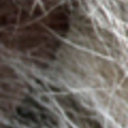Anti-fatigue effects of porcine placenta and its amino acids in a behavioral test on mice.
Słowa kluczowe
Abstrakcyjny
Placenta extracts are used for their health benefits; however, the anti-fatigue effects of placenta have not been elucidated. Thus, we investigated the anti-fatigue effects of porcine placenta extract (PE) and the amino acids present in the PE (glycine, Gly; proline, Pro; glutamic acid, GA; and arginine, Arg) using a forced swimming test (FST) and a tail-suspension test (TST) on mice. Whole PE or individual amino acids decreased immobility times in the FST. PE, Pro, and Arg all lowered blood levels of lactic acid and alanine aminotransferase (ALT). PE and Gly improved glycogen content and catalase activity. As determined from the serum after the FST: PE regulated the effects of interferon (IFN)-γ and tumor necrosis factor (TNF)-α; GA regulated the effects of IFN-γ; Gly and Arg regulated the effects of interleukin (IL)-6; and all of the amino acids present in PE regulated the effects of TNF-α. As determined from the spleen after the FST: Gly and Arg regulated the effects of IL-1β; Gly, Pro, and Arg regulated the effects of IL-6; PE and all of the amino acids present in PE regulated the effects of TNF-α. After the TST, PE and all of the amino acids present in PE reduced immobility duration as well as levels of aspartate aminotransferase and ALT. As determined from the serum after the TST: PE and Gly regulated the effects of TNF-α; Gly and Arg regulated the effects of IL-1β; Gly, Pro, and Arg regulated the effects of IL-6; PE and all of the amino acids present in PE regulated the effects of TNF-α. These results suggest that PE should be considered a candidate anti-fatigue agent.


